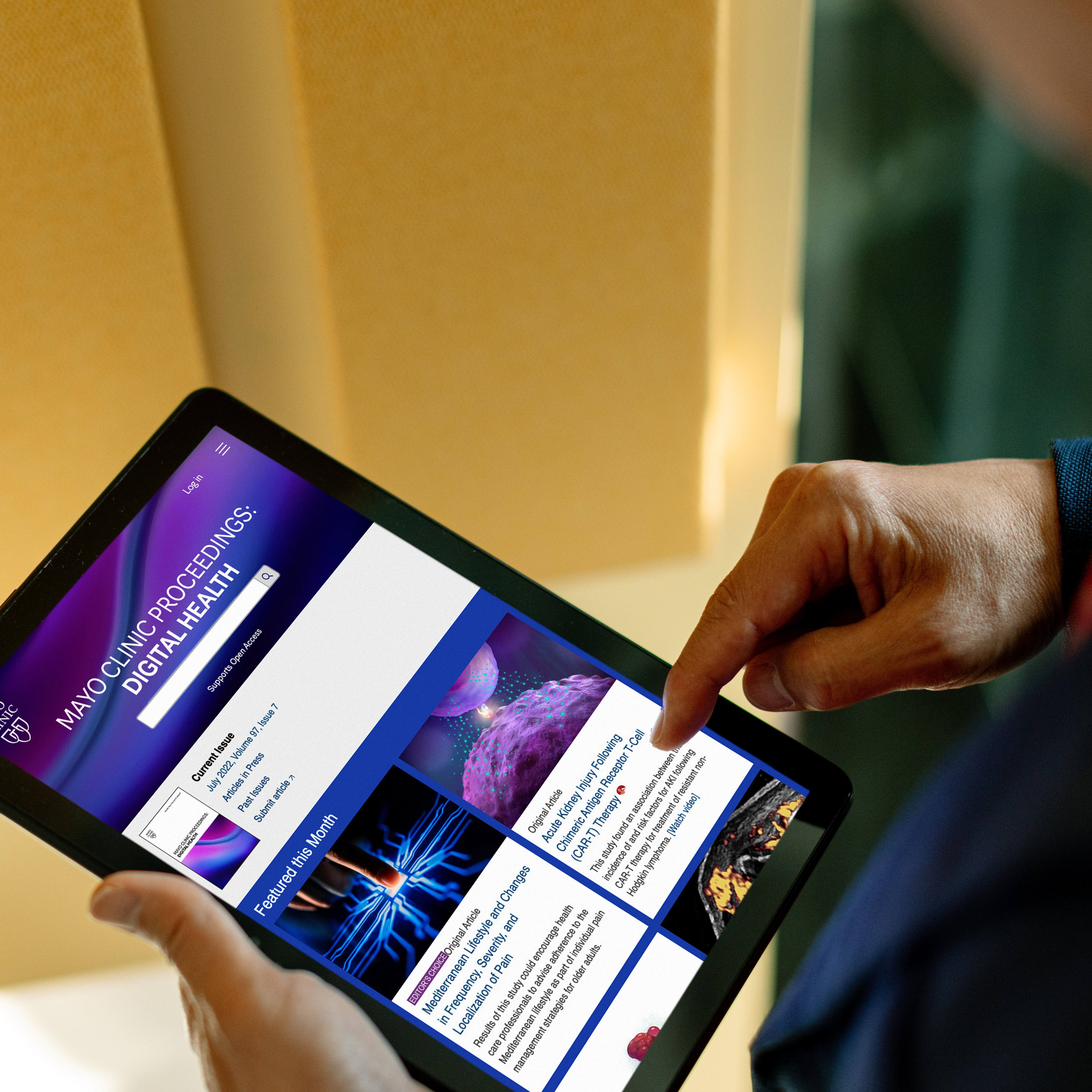In a two-part series published in BMJ Evidence-Based Medicine, Mayo Clinic researchers discuss the availability of health care information on social media platforms. They offer suggestions as to how clinicians can understand and diffuse the effect of misleading information, while taking advantage of credible content to aid in clinician-patient decision making.
Social media describes internet-based self-publishing platforms allowing anyone with an internet connection to interact with others and share their ideas. Social media connects people well beyond the geographical and socioeconomic boundaries of the 20th century. According to the Pew Research Center, more than 70% of American adults use social media today, leading to instant access to both complementary and conflicting ideas.
Not surprisingly, social media sites are playing a large and growing role in where people get their news and information. They contribute to how people develop their worldview, including their understanding of health and health care.
This ease of exchange connects sources of evidence-based medicine directly with potential patients and their families. However, it also connects patients to a bombardment of unverifiable information, delivered through extended social networks. Some of this information may be well meaning, but anecdotal or no longer true to the original source. Other information may be deliberately false or misleading, with intent to benefit from the false information or simply to cause harm.
"Our findings and discussion can add value not only for clinicians, but for patients and other consumers of health care," says Ryan D'Souza, M.D., an anesthesiologist and pain management physician at Mayo Clinic, and the series' first author. "We have provided a framework with which to appraise health information presented on social media networks."
Is this trustworthy information?
First, Dr. D'Souza says, is determining the trustworthiness of the content, including:
- Is the source of the content clear, including the name, credentials and affiliation of the author?
- Is the content comprehensive and up to date?
- Are areas of uncertainty presented, with different views discussed, as relevant?
- Is content independent of conflicts of interest?
In the first paper, the authors describe scenarios of real-world social media content examined for trustworthiness. In the scenarios, they identify and compare several items, providing a simple path to understanding the level of trust that one could assign to each particular piece of information.
Is this information usable?
The authors separate information into two categories — that intended for direct patient use, and that intended for clinicians. They discuss what constitutes usable for patients, as opposed to clinicians.
Patient information should be arranged and presented to meet health literacy standards. In other words, the content should be able to be read and understood by a typical middle school student in their primary language.

"This is not to say that content is not useful if the reading levels are higher than about sixth grade," says M. Hassan Murad, M.D., medical director of the Knowledge Synthesis Program in the Mayo Clinic Robert D. and Patricia E. Kern Center for the Science of Health Care Delivery, and the series' senior author. "However, if, for example the Facebook site of an academic medical center posts content directed at peer researchers, their patient audience will be less likely to understand or find it usable."
Meanwhile, although information for clinicians may be presented with more complexity, for ease of understanding, the authors suggest that minimizing technical jargon and statistics increases usability.
"For any audience," continues Dr. Murad, "if the content does not promote self-care, a healthy lifestyle or a collaboration between patient and physician, it is not particularly usable."
Accessibility and privacy
The intended audience must be able to easily obtain the health information from the social media post. Special technical expertise or extra log-in requirements for patient-focused content make it difficult to appraise credibility. These also can block access to those who could most benefit from the content.
"We assign less weight to the importance of privacy and the confidentiality of personal data when accessing social media platforms and content," says Dr. D'Souza. "After all, one of the benefits of social media platforms is their ability to link together people and content based on personal characteristics and interests. However, if a platform is collecting information, it should disclose how that information will be used."
In the paper, the authors reason that widest reach will occur when the intended audience can access the information anonymously.
Deeper dive for clinicians
In the second part of the series, the authors explore the use of data derived from social media.
"We are fortunate that patients tend to trust their doctors above all other sources of information," says Dr. D'Souza. "However, more and more of those patients come armed with information they collected online."
Dr. D'Souza acknowledges that the volume of peer-reviewed literature has been growing faster than many physicians can keep up with. Along with this comes growth in the number of poorly conducted studies, and studies with low quality evidence.
To assist in a broad-reaching manner, the series' authors developed a framework for the appraisal of studies using data collected from social media platforms — a rapidly growing genre.
They recommend considering questions similar to those used when conducting a systematic review, including:
- Did the study address a question that makes sense in the social media environment?
- Did the search include the appropriate platforms and search terms?
- Is the study process reproducible?
- Did the study use appropriate narrative, qualitative or quantitative methods?
- How certain are the study findings?
The authors delved deeper into questions to consider whether a social media-based study makes sense. They provided several examples of studies that appropriately used data derived from a single or multiple social media platforms.
"We would prefer to see a formal study protocol developed for answering research questions with social media derived data," says Dr. Murad. "At a minimum, investigators should have an a priori plan for the search and analysis, one that is logically developed from available knowledge."
To assist clinicians and researchers in understanding and applying their methodology, the authors appraise a real-world study from 2007 assessing YouTube video content about immunization, or vaccination.
The research team also included:
- Lubna Daraz, Ph.D., University of Montreal, Quebec, Canada. Previously Dr. Daraz held a research fellowship at Mayo Clinic.
- Gordon Guyatt, M.D., McMaster University, Hamilton, Ontario, Canada.
- W. Michael Hooten, M.D., Mayo Clinic.
###
Related resources
- Mayo Clinic — Evidence-Based Practice Research Program.
- Common Sense Education — Everything you Need to Teach Digital Citizenship.
- Pew Research Center — Internet & Technology.








